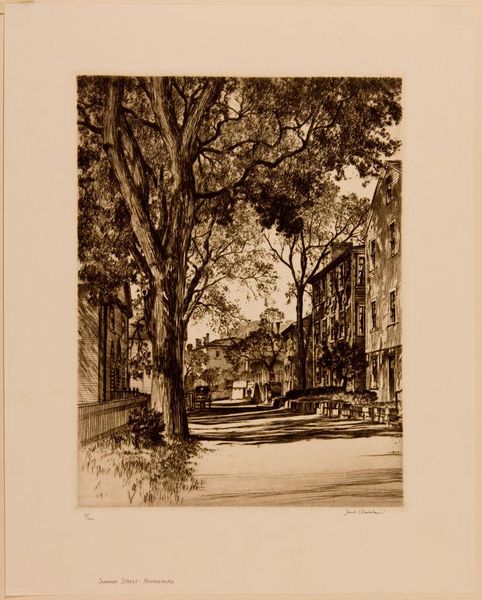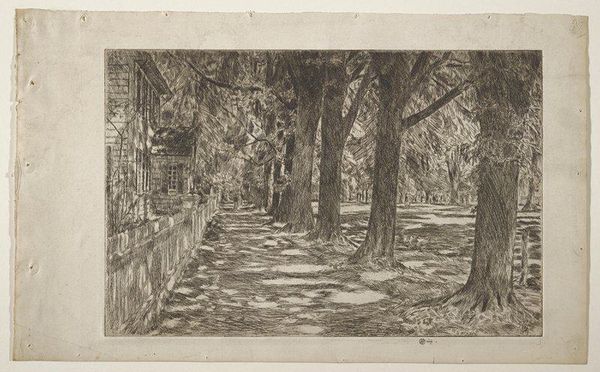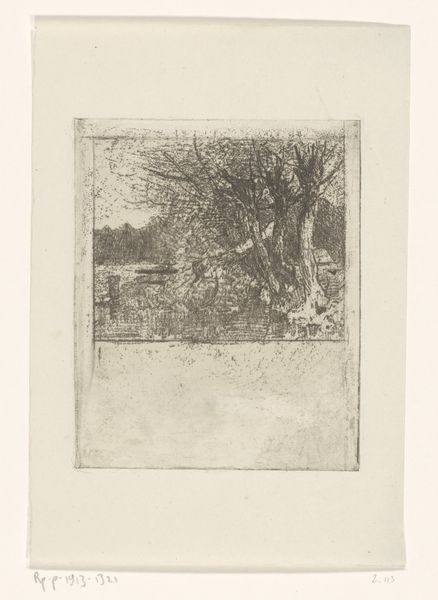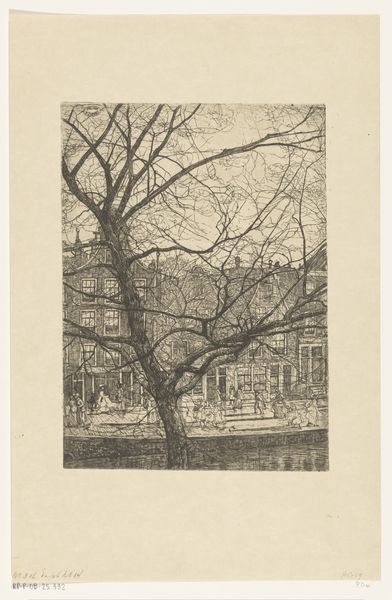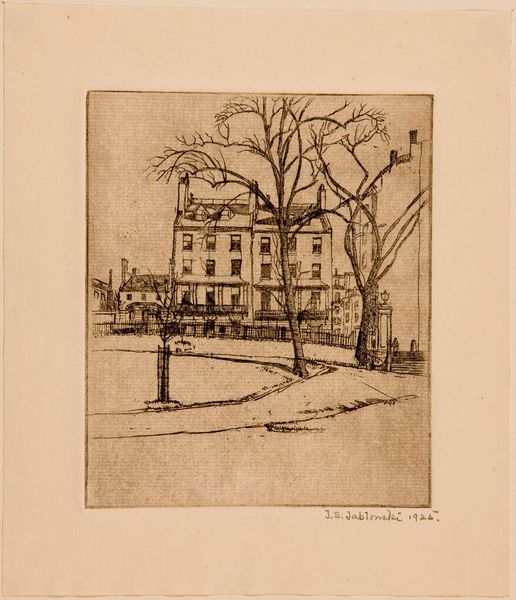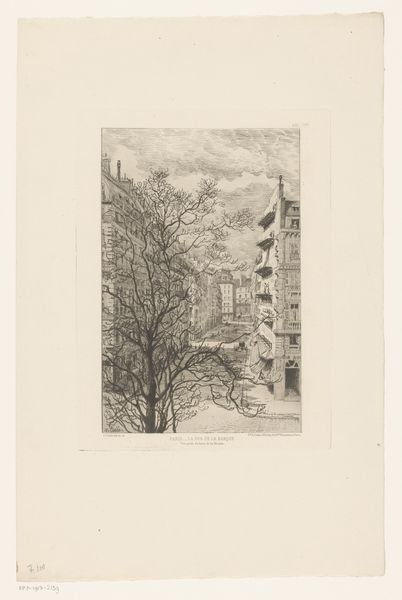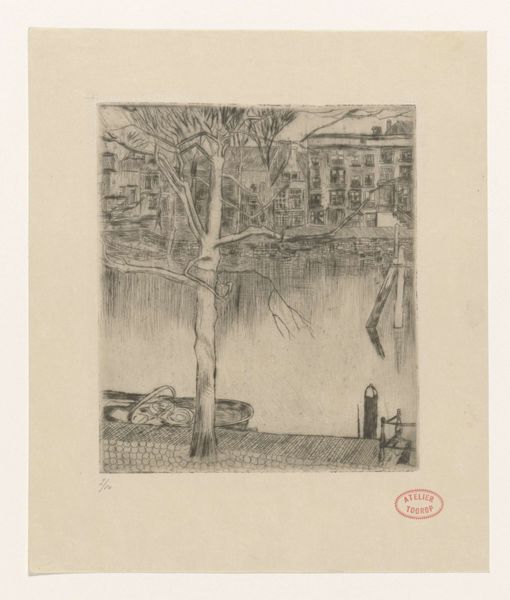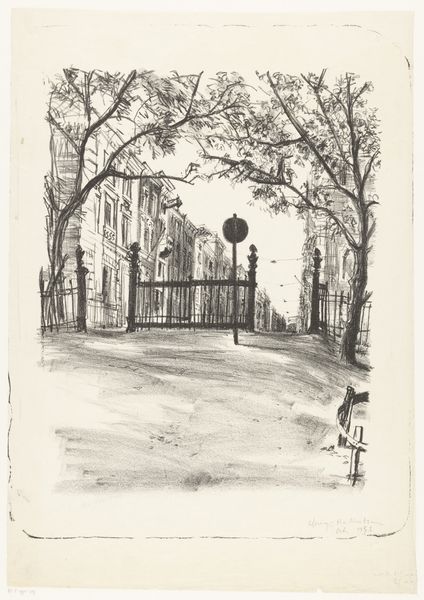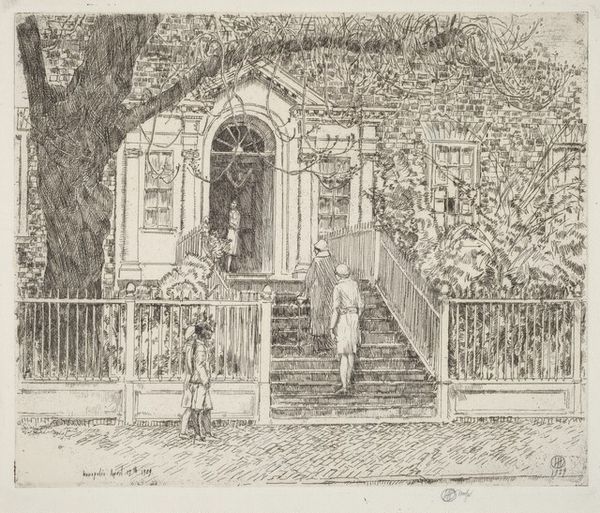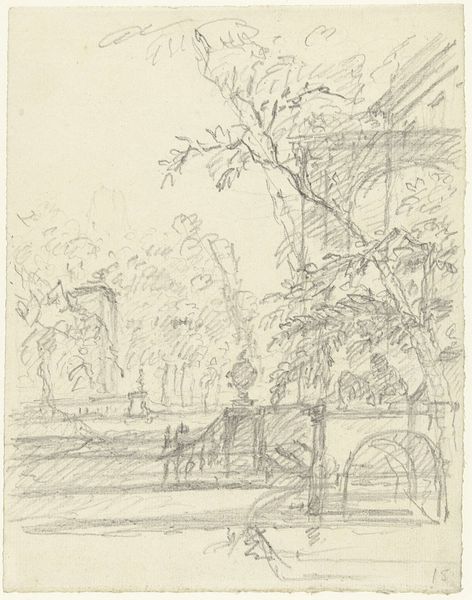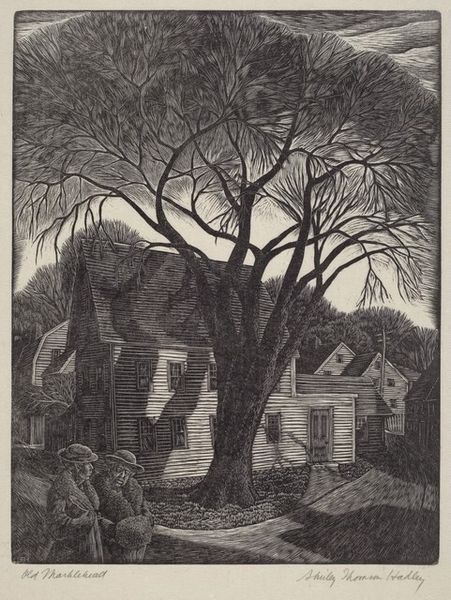
print, etching
# print
#
etching
#
landscape
#
figuration
#
cityscape
#
realism
#
monochrome
Dimensions: plate: 60.8 x 45.6 cm (23 15/16 x 17 15/16 in.) sheet: 68 x 49.4 cm (26 3/4 x 19 7/16 in.)
Copyright: National Gallery of Art: CC0 1.0
Curator: Here we have Peter Milton's etching from 1965, "Street Scene." Editor: It’s somber, even ghostly. The layering feels very deliberate. You get this immediate sense of stillness despite it being an exterior scene with human figures. Curator: I see what you mean. It's interesting how Milton juxtaposes this desolate park scene within what seems like an open window frame. The gate and children give off an isolated, almost alienated vibe. What could that represent in a social sense? Editor: It’s definitely about alienation, or maybe even observation. It looks like it required highly skilled labor—especially with how meticulously detailed and layered the crosshatching is, not to mention the complexity involved in the process itself, with acids eating away at the plate. Do you think he wanted us to consider that invisible work in the face of all the open display here? Curator: The artist definitely wants us to dwell on layers of visual and psychological information! Consider the positioning of the children; they seem confined, watched perhaps. I think that's what gives the scene its pervasive mood. It's a fascinating visual echo of power relations embedded in space. Editor: Interesting. So, the materials--the metal plate, the acid--are not just incidental, but perhaps emblematic of a social order… It kind of makes you consider that everything depicted came at some cost and extraction, in material terms. Curator: Precisely. And the repetition of barred gates--it underscores the emotional tone, but it also hints at the limits to which freedom is granted or experienced differently. There is an internal echo here about freedom versus limitation! Editor: Well, when I consider all the resources—time, material, technical skill, and then compare that with this apparent critique or social reflection that is visible, I get even more conflicted. I wonder who consumed it, who owned it. Curator: It definitely prompts so many levels of engagement--we go to it, it works its way into us and comes out somewhere. That makes me think it's ultimately working and continuing. Editor: For me, this etching stands as a complex monument of a given place and time in all its layered richness—or even a condemnation—demanding we think about cost and who bears them in society, if we can still talk about society.
Comments
No comments
Be the first to comment and join the conversation on the ultimate creative platform.
